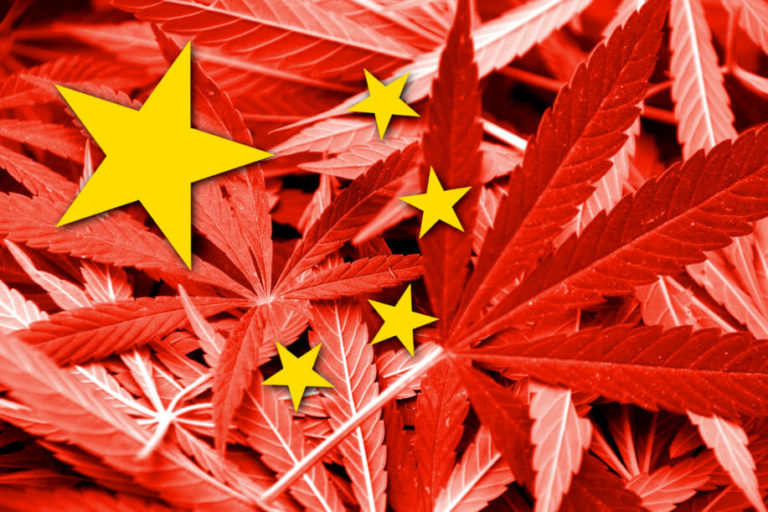
[ad_1]
Cannabis Brands and China Challenges
Cannabis brands account for a sizeable component of my law firm’s intellectual property work (and, indeed, our work generally). Historically, there has been little overlap between our cannabis and China practice areas, beyond our representing a number of cannabis ancillary product companies on their China manufacturing matters. This is starting to change, as we increasingly see bad-faith actors in China targeting cannabis brands’ trademarks. This intersection carries important implications that cannabis business owners need to understand.
This post highlights the emerging IP challenges cannabis brands face from China and provides proactive strategies for cannabis brands to fight back.
China Trademark Squatting
We can only speculate about what is driving this emerging phenomenon. Most likely, it is partly a new manifestation of an old China problem: trademark squatters. Trademark squatters in China now recognize that, much like other brands, cannabis brands also source various products from the country. Obviously we are not talking about cannabis or cannabis derivatives, but rather goods such as vapes, trimmers, merch, packaging, cosmetics, etc. Squatters generally register trademarks being used by brands like yours in the hope that eventually you will pay them to acquire control over “your” trademarks. And guess what, squatting often works, with payout of tens of thousands of dollars common, and larger payouts not unheard of.
For cannabis (and other) brands that source products from China, a squatter to their trademarks can be a huge problem. Chinese trademark squatters often use their trademark rights to get Chinese law enforcement to seize your products, halt your production, or block your exports, all with the ultimate goal of forcing you to buy the China trademark of your brand from them.
To avoid such problems, cannabis brands with any China exposure should vigilantly monitor trademark applications and oppose any suspicious registrations. Even better, they should register their brand names as China trademarks ahead of squatters, to ensure they remain one step ahead in this strategic game. If a squatter does manage to register your brand’s trademarks, your options will become more limited, especially during the first three years following this registration; after three years, there’s a good chance the squatted trademarks will be vulnerable to a cancellation petition on the basis of non-use.
Moreover, there’s an added dimension to consider: the real-world counterparts of these bad-faith actors. They could very well be manufacturers you’ve previously engaged with or have shared sensitive information. The threats could also emanate from rogue employees within your manufacturer’s fold or even affiliated manufacturers. In these complex, high-stakes scenarios, the optimal strategy often entails going on the offensive. Early discovery of such deceit during the trademark application phase allows brands to oppose the registration. But as highlighted, post-registration, the available strategic moves are far fewer.
Brands not sourcing from China aren’t entirely in the clear. Though they face a diminished threat from China trademark squatters, other bad-faith actors are waiting in the wings. In certain instances, these actors may register your brand’s trademarks in China with genuine intent to use them. Even if you don’t manufacture your products in China, there’s probably a manufacturer there that can produce your product and nothing stops such manufacturers from collaborating with entities that have unfairly registered your trademarks.
To mitigate the risk of China-made counterfeits of your products entering the U.S. (or Canada or other markets), cannabis brands need to register their trademarks in their primary sales markets. They should also take the additional step of recording their trademark with U.S. Customs and Border Protection (CBP) or the customs authorities in the country in question, to help prevent the entry of counterfeits.
Of course, the risks posed by someone who is actually using trademarks obtained in bad faith is far greater for cannabis brands that are getting products from China. In addition to shipping counterfeits, bad-faith trademark registrants often engage in the same kind of hijinks as squatters, such as petitioning China law enforcement to shut down your production. Also, keep in mind that the counterfeiter actor might be the manufacturer with whom you have been working, sharing confidential information, or a rogue employee of your manufacturer, or a manufacturer related to yours.
For cannabis brands that find themselves (or could find themselves) in such a high-stakes situations, it is likely that the only sensible option is going on the offensive and mounting a challenge to the bad-faith actor. Ideally, you will find out about the shenanigans during the trademark application process, when you can oppose registration of the trademark. As discussed, options will be more limited after registration.
Conclusion
The merging of cannabis brands with China’s IP landscape introduces new challenges. Simultaneously, the need for cannabis brands to protect their intellectual property has become increasingly important. Being proactive is crucial; understanding potential threats, and arming yourself with the right tools and knowledge can make all the difference.
Ensure you have adequate protections in place not just in your home market, but possibly in China as well. If a squatter or counterfeiter has already secured rights over your brand’s trademarks, be prepared to go on the offensive.
Editor’s Note: This piece first ran on our firm’s China Law Blog on August 28, 2023.
[ad_2]
Source link